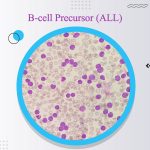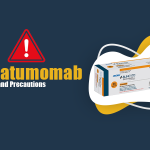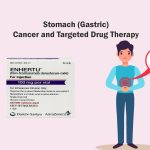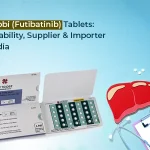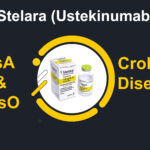Introduction: Acute lymphoblastic leukemia (ALL) is a sort of blood cancer. ALL can also be addressed by certain other names such as “acute lymphocytic leukemia” and “acute lymphoid leukemia.” ALL is most commonly developed leukemia in children. Advances in the treatment of ALL have resulted increased remission rates. The number of patients who have gone into remission or have been cured increases each year.
About ALL: Acute lymphoblastic leukemia is a type of cancer that begins in the bone marrow. An individual can get this cancer at any point of their age. The overall risk of getting this cancer is small for children and adults. Apart from this, ALL remains the most common type of cancer in children aged under 15. The risk of getting adult ALL increases in individuals aged 50 and older.
Causes of ALL: Acute lymphoblastic leukemia starts with a change to a single cell in the bone marrow. Health specialist do not know what causes most cases of this cancer. You can’t catch this cancer from someone else.
Signs and Symptoms: Many ALL signs and symptoms are also caused by other types of illness. Most individual with these signs and symptoms do not have Acute lymphoblastic leukemia. A sign is a change in the body that the health specialist sees in an exam or a test result. A symptom is a change in the body that the patient can notice or experience.
A person with Acute lymphoblastic leukemia may have
- Aches in legs, arms or hips
- Black-and-blue marks for no clear reason
- Enlarged lymph nodes
- Fever without obvious cause
- Pale-looking skin
- Pinhead-sized red spots under the skin called petechiae
- Prolonged bleeding from minor cuts
- Shortness of breath during physical activity
- Tiredness or no energy
- Vomiting
- Unexplained weight loss.
Diagnosis: It is crucial for patients to receive the appropriate diagnosis. The acute lymphoblastic leukemia is diagnosed with blood and bone marrow tests.
Blood Cell Counts: Health specialist orders a test named a CBC (complete blood count). This test counts the numbers of RBCs, WBCs and platelets. Usually, patients with this cancer have lower-than-expected RBCs and platelets.
Blood Cell Examination: The cells are stained (dyed) and looked at through a microscope. This test is named a blood smear. An individual with acute lymphoblastic leukemia usually has excess leukemic blast cells in the blood. Blast cells do not acta like normal cells. The blood smear sample may also be considered for the cytogenetic analysis and immunophenotyping, explained below.
Cytogenetic analysis: Every single cell in the body has chromosomes that carry genes. Genes provides singals or instructions that tell each cell what to do. The test named cytogenetic analysis assesses the chromosomes of the acute lymphoblastic leukemia blast cells.
Immunophenotyping: The test named immunophenotyping shows if the acute lymphoblastic leukemia cells are B-cells or T-cells. Most individuals have B-cell acute lymphoblastic leukemia.
Bone Marrow Tests: Other tests will be done to ensure the diagnosis of acute lymphoblastic leukemia is correct. Tests named bone marrow aspiration and bone marrow biopsy are done. These tests take a close look at the acute lymphoblastic leukemia cells. They also find out the % of ALL cells in the bone marrow. The specialists uses information from all of the tests to decide
- The type of drug therapy a patient is required
- How long the treatment will last.
The nature and duration of therapy may also depend on the patient’s age.
ALL Treatments: In case any individual’ve been diagnosed with acute lymphocytic leukemia (ALL), your cancer care specialists will discuss your treatment options with you. Your options may be affected by the ALL subtype, certain other prognostic factors, your age and overall state of health. The main types of treatment used for acute lymphoblastic leukemia include:
- Chemotherapy for Acute Lymphocytic Leukemia (ALL)
- Targeted Therapy for Acute Lymphocytic Leukemia (ALL)
- Immunotherapy for Acute Lymphocytic Leukemia (ALL)
- Surgery for Acute Lymphocytic Leukemia (ALL)
- Radiation Therapy for Acute Lymphocytic Leukemia (ALL)
- Stem Cell Transplant for ALL (Acute Lymphocytic Leukemia)
Chemotherapy for Acute Lymphocytic Leukemia (ALL): Chemotherapy (chemo) is the consideration of drugs to treat cancer. Chemo drugs travel through the bloodstream to reach cancerous cells all over the body. This makes chemo effective for cancers such as leukemia that has spread throughout the body. Chemo is the main treatment for just about all people with ALL. Due to its potential adverse events, the chemo might not be considered in patients with poor health, but the standard/advanced age by itself is not a barrier in order to getting chemotherapy. The chemotherapy for Acute Lymphoblastic Leukemia is typically divided into three different phases:
Induction: which is short and intensive, usually lasts about 28-30 days.
Consolidation (intensification): which is also intensive, typically lasts for a few months.
Maintenance (also known as post-consolidation): which is less intensive, typically lasts for around 2 years.
Chemo drugs used to treat ALL: Chemo for ALL usually uses a combination of anti-cancer medications. The most commonly used chemo drugs include:
- Vincristine or liposomal vincristine (Marqibo)
- Daunorubicin (daunomycin) or doxorubicin (Adriamycin)
- Cytarabine (cytosine arabinoside, ara-C)
- L-asparaginase or PEG-L-asparaginase (pegaspargase or Oncaspar)
- 6-mercaptopurine (6-MP)
- Methotrexate
- Cyclophosphamide
- Prednisone
- Dexamethasone
- Nelarabine (Arranon)
Individuals typically will be given a some of these medicines at different times during the entire course of therapy, but they will not be given all of them.
Targeted Therapy for Acute Lymphocytic Leukemia (ALL): These (targeted therapy) drugs acts by attacking specific parts of cancer cells. They are absolutely different from the standard chemotherapy (chemo) medicines. They are sometimes effective when the chemo doesn’t, and also they often have different side effects. Some of these medicines can be
- useful in certain cases of ALL.
- Imatinib (Gleevec)
- Dasatinib (Sprycel)
- Nilotinib (Tasigna)
- Ponatinib (Iclusig)
- Bosutinib (Bosulif)
In patients with Ph+ Acute Lymphocytic Leukemia, adding a TKI to chemotherapy helps increase the probability that the leukemia will go into remission. Keep taking one of these medications can also help keep the leukemia from coming back. If one TKI is not effective (or is no longer working), another one might be tried. These mediciness are taken daily as pills.
Immunotherapy for ALL (Acute Lymphocytic Leukemia): Immunotherapy is known as the consideration of medicines to help a patient’s own immune system identify and kill cancer cells comparatively more effectively. A few of immunotherapy are now being prescribed for treating the ALL in certain junctures. Some of the immunotherapy medicines used in order to treat Acute Lymphocytic Leukemia might also be considered forms of targeted therapy, because they acts by attaching to specific parts of leukemia cells.
Examples include:
- Blinatumomab (Blincyto)
- Inotuzumab ozogamicin (Besponsa)
Blinatumomab (Blincyto): It is a special kind of monoclonal antibody because it has potential to attach to a couple of (2) different proteins simultaneously. One part of Blincytoattaches to the CD19 protein, which is available on the B-cells, including some leukemia as well as the lymphoma cells. Another part attaches to CD3, a protein available on immune cells named T cells. By binding to these couple of proteins, blinatumomab injection brings the cancer cells as well as immune cells together, which cause the immune system to attack the cancerous cells.
This medicine is prescribe for treating some types of B-cell Acute Lymphocytic Leukemia, typically following chemo has been tried. It is administered into a vein (IV) as a continuous infusion over 28 days. It can be repeated again for more cycles with 14 days off in between. Due to certain serious side effects that occur more often while on the first few times it is administered, the patient usually needs to be treated in a hospital or clinic for the beginning of minimum initial a couple of cycles.
The most commonly reported side effects are headache, fever, swelling of the feet/hands, nausea, tremor, rash, constipation, and low blood potassium levels. This drug can also be responsible for causing low white blood cell counts, which may increase the risk of serious infection.
The medication blincyto injection can also be responsible for causing neurologic problems, such as slurred speech, seizures, passing out, confusion, and loss of balance.
Take Care of Yourself:
- Your must keep all appointments with the health specialist.
- Discuss how you feel with your doctor at every visit. Ask any query you may have about adverse events.
- Individuals with ALL may have more infections than other. Follow the words of your doctor for preventing infection.
- Prefer healthy foods each day. It is okay to eat 4 or 5 smaller meals rather than 3 bigger ones.
- Report to your healthcare provider about tiredness, fever or any other symptoms.
- Avoid smoking. Patients who smoke must get help to quit.
- Get sufficient rest and exercise. Talk with your health specialist prior to starting an exercise program.
- Keep the healthcare file along with all of the copies of lab reports as well as treatment records.
- Have regular cancer screening. See your primary care healthcare provider to keep up with other healthcare needs.
- Interact with family and friends about your feelinga. When family and friends know about ALL and its treatment, they may take less worry.
- Seek medical advice in case you feel sad or depressed and your mood does not improve over time. Depression is an illness. It should be treated even when an individual is being treated for ALL. Treatment for depression has benefits for individuals living with cancer.prescribe


